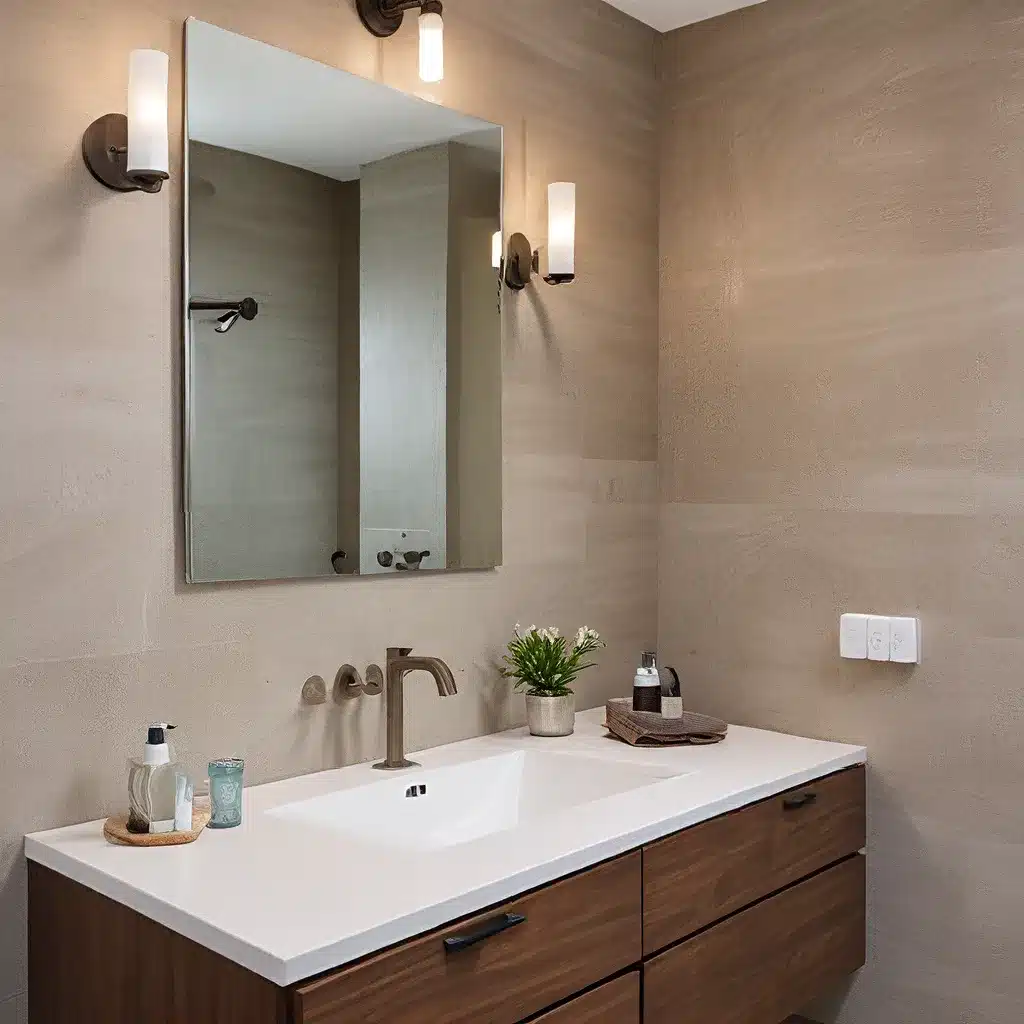
When it comes to bathroom renovations, many homeowners are now prioritizing eco-friendly and sustainable options. Gone are the days of pink toilets and water-guzzling fixtures. Today, the bathroom is a prime opportunity to reduce your environmental footprint and enjoy the long-term benefits of efficient, high-performance bathroom products.
Choosing Eco-Friendly Washbasin Materials
The washbasin is often the focal point of any bathroom design, so it’s crucial to select materials that are both visually appealing and environmentally responsible. Ceramic is a classic and durable choice, but look for options made from recycled content or clay sourced locally to minimize the carbon footprint. Porcelain is another popular option, known for its smooth, glossy finish and easy maintenance.
Granite and quartz are stunning natural stone choices that can elevate the look of your bathroom. These materials are highly durable and resistant to scratches, stains, and heat, making them a practical long-term investment. For an even more sustainable approach, seek out recycled glass or concrete washbasins, which offer unique textures and colors.
Efficient Water-Saving Fixtures
One of the primary goals of an eco-friendly bathroom renovation is to reduce water consumption. This starts with selecting the right faucets, showerheads, and toilets that bear the EPA WaterSense label, ensuring they meet strict water-efficiency standards.
Dual-flush toilets are an excellent option, allowing users to choose between a full flush for solid waste or a reduced flush for liquid waste, saving thousands of gallons of water annually. Low-flow showerheads and aerating faucets can also significantly cut water usage without compromising performance.
Greywater Systems: Recycling Water for Irrigation
Another innovative way to conserve water is by incorporating a greywater system into your bathroom design. Greywater is the gently used water from sinks, showers, and washing machines, which can be diverted and used for landscape irrigation instead of entering the wastewater stream.
Setting up a greywater system may require additional plumbing work, but the long-term benefits can be substantial, reducing your overall water consumption by up to 30%. This not only saves money on utility bills but also helps to preserve precious freshwater resources.
Energy-Efficient Lighting and Ventilation
Lighting and ventilation are essential components of any bathroom, and eco-conscious homeowners have more options than ever before to reduce their energy usage in these areas.
LED lighting is the clear choice for energy efficiency, consuming up to 90% less energy than traditional incandescent bulbs while lasting 25 times longer. Look for ENERGY STAR-certified LED fixtures to ensure you’re getting the most efficient and high-quality products.
Bathroom exhaust fans are crucial for maintaining indoor air quality and preventing moisture buildup, which can lead to mold and mildew. The latest ENERGY STAR-rated exhaust fans use humidity sensors to operate only when necessary, reducing energy consumption while still providing effective ventilation.
Sustainable Cabinetry and Countertops
When selecting bathroom cabinetry and countertops, be mindful of the materials used and their environmental impact. Avoid products containing formaldehyde, a known carcinogen that can off-gas into the air.
Instead, opt for formaldehyde-free options, such as solid wood, recycled wood, bamboo, or even recycled steel or concrete. For countertops, consider materials like recycled glass, paper, or concrete, which offer unique and eco-friendly alternatives to traditional options.
Tile and Flooring Choices
Tile is a common feature in bathrooms, and there are now many eco-friendly tile options available, including those made from recycled content, reclaimed wood, or natural materials like bamboo and cork.
For flooring, in addition to tile, you can also explore natural plasters, eco-friendly concrete, or recycled rubber options. These materials not only reduce your environmental impact but can also add visual interest and texture to your bathroom design.
Proper Disposal and Donation of Old Fixtures
When it’s time to replace old bathroom fixtures, don’t simply send them to the landfill. Instead, consider donating or reselling them through online platforms, local salvage stores, or community groups. This not only keeps usable items out of the waste stream but also allows others to benefit from your remodeling project.
For items that are no longer in good condition, research proper disposal methods in your area, such as recycling programs for metal, glass, and plastic components. By taking the time to responsibly handle the removal of old fixtures, you can ensure your eco-friendly bathroom renovation has a minimal environmental impact.
Putting It All Together: Creating Your Sustainable Bathroom Oasis
Embarking on an eco-friendly bathroom renovation can seem daunting, but with the right guidance and resources, it can be a rewarding and impactful project. By carefully selecting water-efficient fixtures, energy-saving lighting and ventilation, and sustainable materials, you can create a bathroom that not only looks great but also reduces your environmental footprint.
Remember, the key to a successful eco-friendly renovation is to work with experienced professionals who understand the latest green building practices and products. Reach out to local green building professionals or check out online directories like the Green Home Guide to find contractors and suppliers who can help bring your sustainable bathroom vision to life.
With a little planning and a focus on sustainability, your bathroom can become a true oasis of efficiency and style, setting the tone for a more eco-conscious home. Visit Washbasin Factory to explore our wide range of sustainable bathroom products and start your journey towards a greener, more water-wise future.